Bakery is bulking. Protein claims are no longer solely reserved for products designed for gym goers and athletes as regular folks increasingly focus on everyday nutrition.
Right alongside it in increasingly popular nutrition claims is the equally important, although far less sexy, fibre. Its associations with the gut microbiome and healthy bowel movements make it harder for marketing departments, but fibre has actually outpaced protein in new product launches of late.
Recent research from ingredients distributor and supply chain specialist ACI Group, in partnership with GoodMills Innovation, found that between January 2021 and April 2025 there were 194 ‘source of fibre’ or ‘high fibre’ launches rolled out in the bakery and desserts category compared to 183 high-protein ones. Products containing 3g of fibre per 100g are eligible to use the ‘source of’ label while those with 6g per 100g can state that they are ‘high in fibre’. At least 20% of the energy value of a product must come from protein for a ‘high protein’ claim to be used on pack.
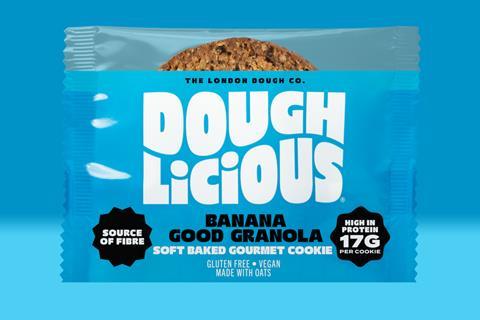
The flurry of examples of NPD includes Mr Kipling Breakfast Bakes and Lunchbox Cake Slices range (source of fibre), Doughlicious Banana Good Granola Soft Baked Gourmet Cookie (source of fibre and high in protein), White’s Soft Baked Oaty Bar (high in fibre), and Biona Organic Power Protein Bread.
“Fibre and protein are increasingly front-of-mind because shoppers are looking for foods that do more for them – not just taste good,” explains Roni Newman, head of marketing, Healy Group. “Conversations around ultra-processed food and functional nutrition have made people more aware of what they’re eating. Bakery can feel indulgent or ‘guilty’, so highlighting fibre and protein helps consumers feel that they’re making a smarter choice without compromising enjoyment.”
Essentially, they “bridge indulgence with wellbeing, making them incredibly powerful”, she adds.
They can also “offer a point of difference to stand out against competitors” in a crowded market, highlights Hannah Sibley, product and innovation director, Aryzta UK & Ireland.
“Health is not the top priority across the board, but it is a strong secondary factor”
However, the research by ACI Group found that retailers and bakery manufacturers were missing out on the opportunity to improve consumer health and generate sales by not shouting about a product’s health credentials as much as they should be. This, according to ACI Group CEO Karsten Smet, is important because 64% of global consumers now examine nutritional labels when choosing snacks [FMCG Gurus Top 10 Trends for 2024], “underscoring a shift toward informed, health-conscious indulgence”.
While some consumers are balancing health and indulgence in their diets, it is often indulgence, or at the very least taste, which wins out in the ranking of priorities.
“Taste remains the number one driver… which is important for repurchase,” asserts Sibley. “Health is not the top priority across the board, but it is a strong secondary factor, especially in premium and specialty bakery products. Retailers who offer products that can combine great taste with health appeal are best positioned to grow in this space.”
NPD in focus: better-for-you bagels
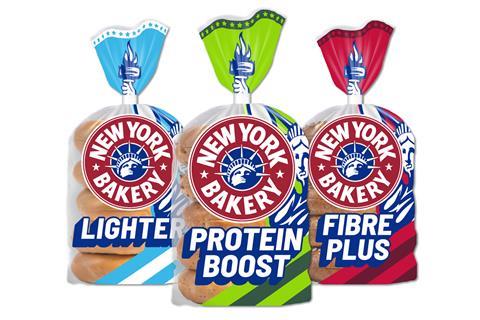
New York Bakery, part of the Grupo Bimbo stable, rolled out a range of better-for-you bagels – Fibre Plus, Protein Boost, and Lighter – designed to meet an individual consumer health needs.
The bagels rely heavily on seeds for their functional health benefits. For example, the Fibre Plus bagels have brown linseeds, millet, and poppy seeds while the Protein Boost ones utilise pumpkin and sunflower seeds as well as brown linseeds and wheat protein for their gains.
Stephen Jones, UK sales director, Grupo Bimbo UK tells British Baker that the business explored the idea of a “single ‘all round’ healthier bagel” but felt it could reach more consumers with a range of targeted better-for-you options rather than a “catch-all recipe”. “Our research showed that consumer health priorities in bakery are diverse with calorie control, high protein and high fibre/gut health topping the list,” Jones says. “No single product could address all these needs equally well.”
Comparing the NPD with the firm’s existing Original bagel showcases a clear fibre and protein boost for the products, although the protein bagel has more protein and fibre than the fibre-focused one.
| Product | Calories per serving / per 100g | Protein per serving / per 100g | Fibre per serving / per 100g |
|---|---|---|---|
|
The Original (85g each) |
229 kcal / 270kcal |
7.8g / 9.2g |
2.8g / 3.3g |
|
Fibre Plus (65g each) |
174 kcal / 268 kcal |
7.9g / 12.1g |
4.2g / 6.4g |
|
Protein Boost (68g each) |
202 kcal / 297 kcal |
10.6g / 15.5g |
4.4g / 6.5g |
|
Lighter (59g each) |
158 kcal / 268 kcal |
5.6g / 9.6g |
1.8g / 1.8g |
Full steam ahead for HFSS
Beyond consumer demand for higher protein and higher fibre baked goods, there’s another reason to up the nutrition in products – high fat, salt, and sugar (HFSS) regulations.
The restriction of HFSS products by location came into force on 1 October 2022 with recent research showing a modest decline in the volume of HFSS products sold since its introduction. The restriction of products by volume price and multibuys (such as 3 for 2, or buy one get one free) will be live from 1 October 2025 with an advertising ban to follow in January 2026.
“One emerging strategy is the substitution of empty calories with nutrient-dense ingredients,” notes ACI Group’s Smet. “The ability to increase the fibre and protein content not only helps with HFSS scoring but aligns with satiety and weight management trends.”
But, because things are rarely straightforward when legislation is involved, there’s a reasonable chance this will be undone at a later date. In the UK Government’s ‘Fit For The Future’ 10-year health plan for the NHS, published in July, it confirmed the promotion ban would come in as planned but by ‘introducing smarter regulation, focused on outcomes’ it expects to repeal it in the future.
This undoubtedly leaves manufacturers in a predicament, and futureproofing and reformulation high on the agenda for the foreseeable. Forward-thinking bakery manufacturers see the market shifts and regulatory requirements “not as hurdles but as opportunities”, says an optimistic Smet.
“By prioritising fibre and protein enrichment, they can simultaneously address multiple challenges, responding to UPF concerns, while maintaining clean label status and complying with HFSS rules. Critically, these changes enable premiumisation – offering consumers a more nutritious, satisfying product that commands greater brand loyalty and potentially higher price points,” he adds.
NPD in focus: protein crumpets
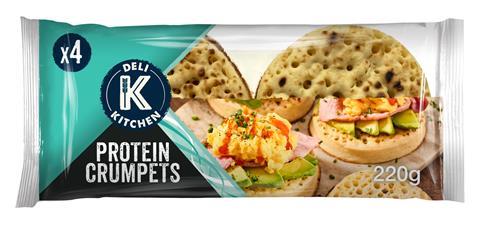
Deli Kitchen is bulking up the morning goods category with the addition of Protein Crumpets to its line-up. They build on the success of the brand’s protein range, launched last October, which included Protein Banana Pancakes, Protein Wraps, and Protein Folded Flatbreads.
Wheat protein and pea protein isolate are doing the heavy lifting in the crumpets, which boast 60% more protein than standard crumpets (compared to bestseller Warburtons).
| Product | Calories per serving / per 100g | Protein per serving / per 100g | Fibre per serving / per 100g |
|---|---|---|---|
|
Protein Crumpets (55g each) |
94 kcal /172 kcal |
5.4g / 9.8g |
2.7g / 4.9g |
|
Warburtons Crumpets (55g each) |
97 kcal / 176 kcal |
3.3g / 6g |
1.1g / 2g |
The packs feature ‘high in protein’ markers alongside interesting serving suggestions such as avocado, ham, and scrambled egg for even more of a protein hit.
Wholesome ingredients
Suppliers and bakery manufacturers are primed and ready to help with a raft of ingredients to enhance protein and fibre levels in baked goods. These include “innovative, clean-label ingredients including natural fibre sources, clean-label emulsifiers and protein isolates,” says ACI’s Smet.
“Classic bran-type ingredients are being eclipsed by soluble fibre additions, including inulin and resistant starches”.
He points to plant-based proteins such as those made from pea and fava beans, as well as chicory root inulin. The latter is often used as a fat or sugar replacer while also helping to lift soluble fibre content. Another innovation in the spotlight, according to Smet, are natural citrus and apple fibres which are “especially useful in gluten-free formulations, where they can contribute to great crumb structure and moisture retention”. Rounding off the heavy hitters is oat fibre which is “becoming increasingly popular” and performs well in high moisture products like muffins and sandwich loaves.
Lydia Baines, marketing manager, bakery, at Puratos UK says “classic bran-type ingredients are being eclipsed by soluble fibre additions, including inulin and resistant starches”.
Wholegrains and seeds are also rising in popularity thanks, in part, to the increased prevalence of gut health and the impact a diverse diet can have on a microbiome.
NPD in focus: Hovis White ‘n Fibre
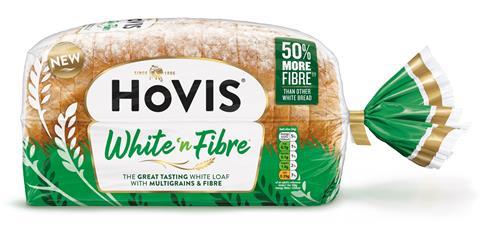
White bread is the go-to choice for British consumers, but its fibre content could use a kick. Enter Hovis White ‘n’ Fibre, launched as part of a raft of NPD including premium loaves and sub rolls.
The loaf boasts 50% more fibre than other white loaves and is a source of Vitamin D. A closer look at the ingredients deck reveals its fibre boost comes from a mix of flours – including barley, oat, soya, and spelt – as well as fava bean flour and inulin.
| Product | Calories per serving / per 100g | Protein per serving / per 100g | Fibre per serving / per 100g |
|---|---|---|---|
|
Hovis White ‘n Fibre (44g slice) |
102 kcal / 232 kcal |
4g / 9g |
1.7g / 3.8g |
|
Hovis Soft White Medium (40g slice) |
93 kcal / 233 kcal |
3.5g / 8.7g |
1g / 2.4g |
“Fibre claims are becoming more specific – shoppers want to know if their favourite snacks contain prebiotics or whole grains and the potential health benefits,” Baines explains.
“Following breakthrough research from the American Gut Project, people are more aware of how consuming a variety – not just volume – of different plants can help shape their gut microbiome. Baked goods with grains and seeds are a great way for health-savvy consumers to contribute to their recommended 30 plant ‘points’ and feed the ‘good’ bacteria in their digestive system,” she adds.
Positive messaging and education as well as action from industry certainly made an impact in Denmark thanks to the Danish Whole Grain Initiative. The public-private partnership between several associations, food companies, retail chains, and trade bodies sought to have a positive impact on public health by encouraging Danes to eat more wholegrains.
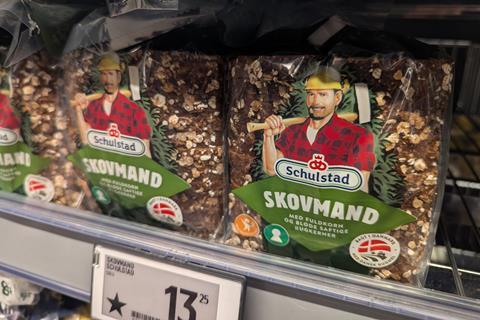
Its vision was to increase the availability of whole grain products and spread awareness of the beneficial effects of whole grains. This included the use of a whole grain logo on products (such as rye bread, pasta, white bread, and more) to help inform consumers the goods contain a certain amount of wholegrains. The results of the initiative are impressive and included:
- A significant increase in the number of products labelled with the whole grain logo, from 190 in 2010 to 1,097 products in 2019
- Consumer awareness with 68% of all Danes saying they are familiar with the whole grain logo, and out of them, 80% say they also shop according to it
- A significant increase in the average daily intake of whole grains from 36 grams per day before the campaign started to 82 grams per day in 2019.
What made the approach so effective was the combination of reformulation, education, and front-of-pack labelling. The nation’s love of rye bread, which is naturally high in fibre, certainly gave the Danes a head start but it shows the powerful potential of a market-wide shift.
“The rise of protein and fibre as functional ingredients are fast becoming strategic imperatives, reflecting a broader evolution in the role of baked goods in modern diets,” says Smet. “It also presents a unique opportunity for product developers to create the next generation of bakery products that are nutrient-dense, functionally relevant, and commercially successful.”
ADVERTISEMENT: ARYZTA
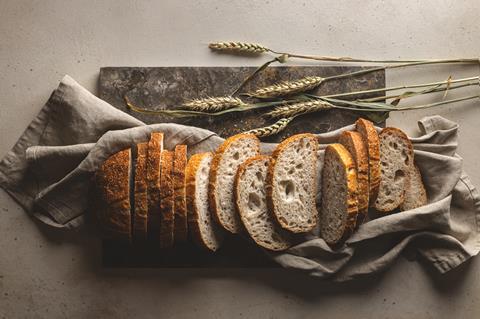
In-store bakery supplier, Aryzta is meeting the needs of grocery, retail convenience and foodservice businesses across the country. The brand has developed and enhanced its portfolio of premium products, all of which deliver value and growth for its partners and customers.
We work closely with our partners to develop and manufacture private label products with the finest ingredients to meet their consumer’s needs. With bakeries and NPD expertise across Europe we are experts in creating a wide range of bakery products including Speciality Bread & Rolls, French Breads, Viennoiserie, Danish Pastry and many more.
Against a fluctuating economic landscape, consumers are demanding better access to fresh and healthy breads, so they have the choice to recreate much loved recipes, that they’d typically find whilst eating out, at home.
We’re also seeing an increase in demand for bigger loaf formats across our portfolio. Linking back to the point made previously, shoppers are expanding their bread consumption across more at home occasions, requiring a larger quantity. Find out more by visiting our website: www.aryzta.co.uk/sourdough/



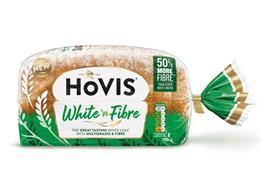
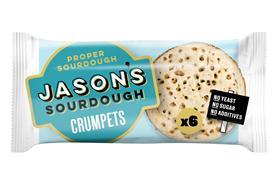





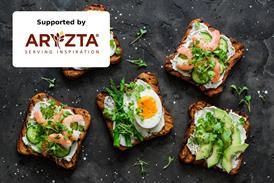
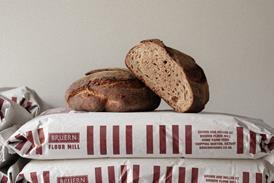

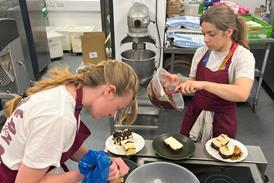


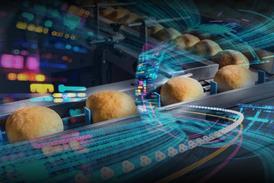


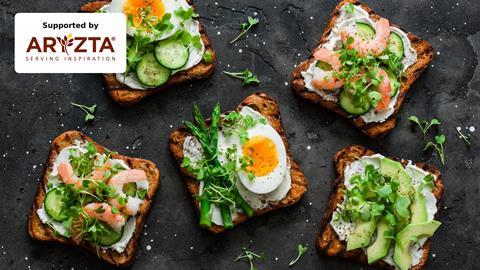
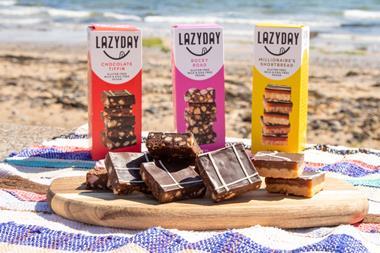
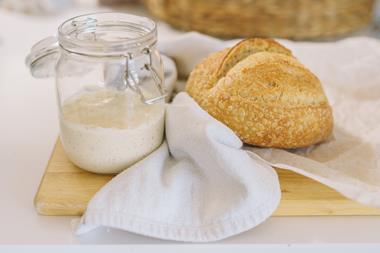
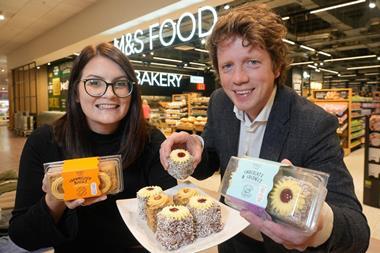
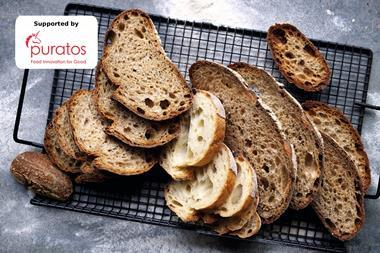
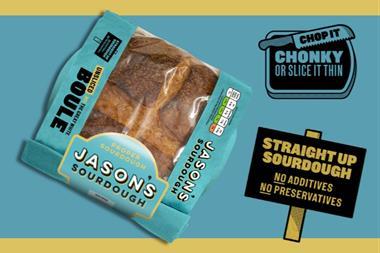
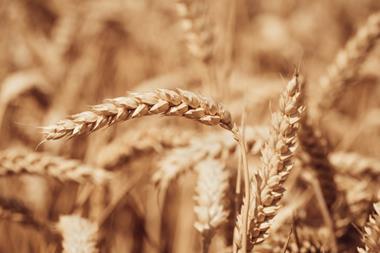



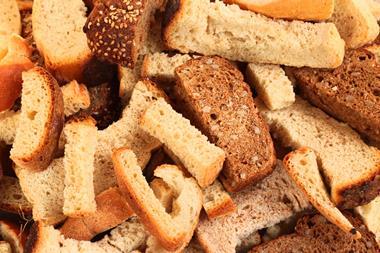
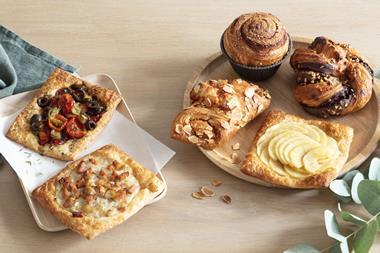


No comments yet